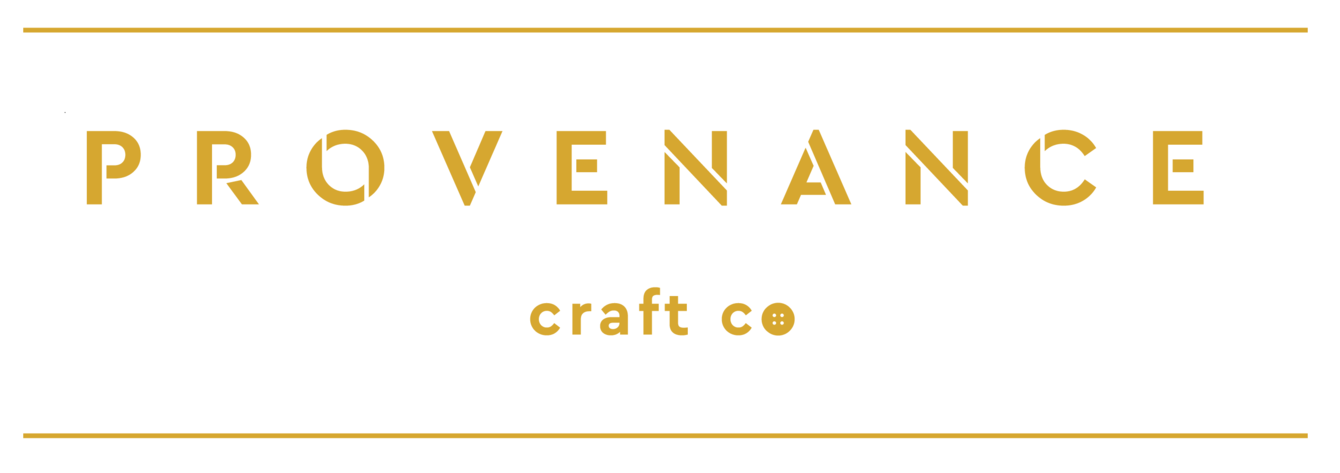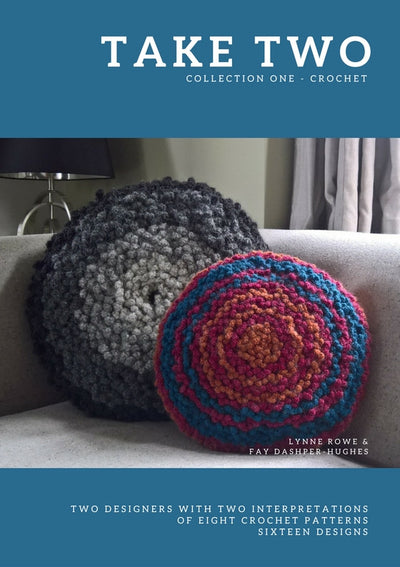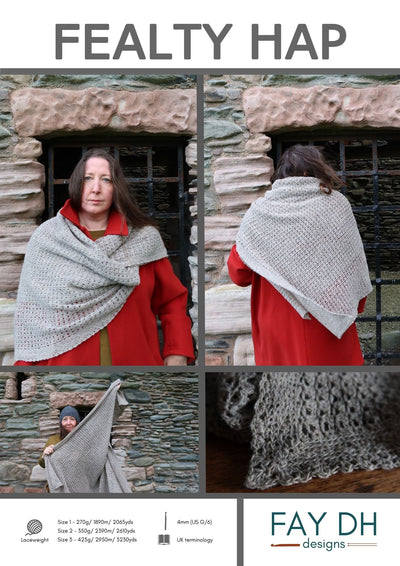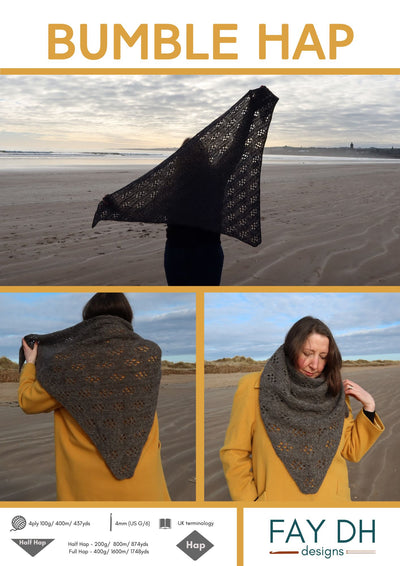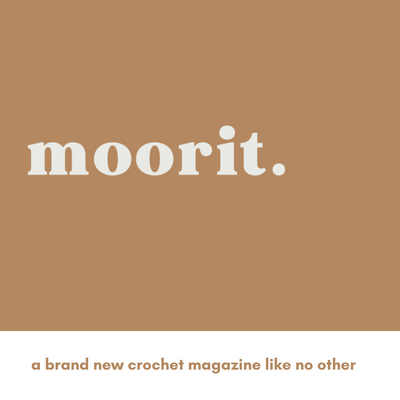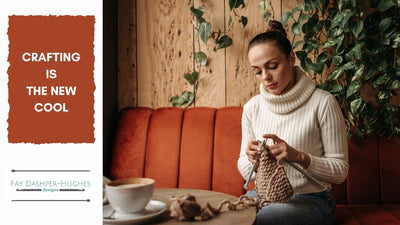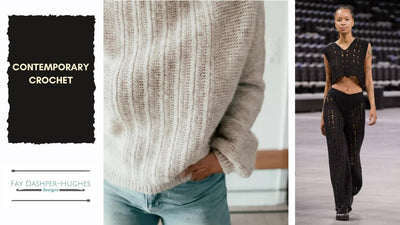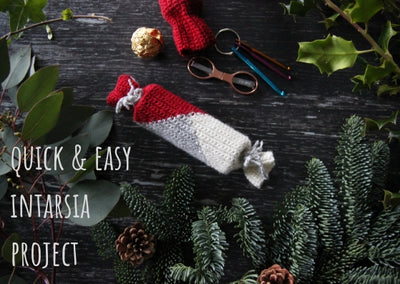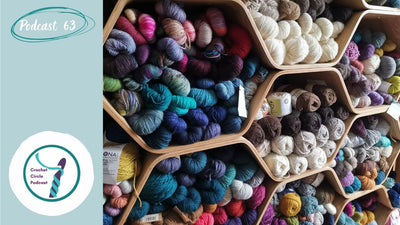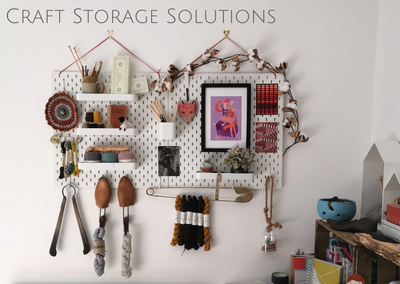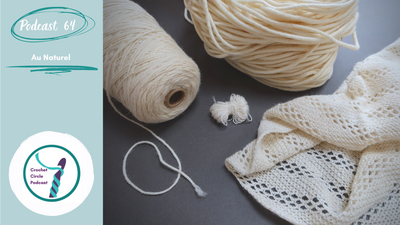
HOW TO CHOOSE YARN COLOURS
About a 6 minute read
QUICK INTRODUCTION
For some, choosing colours comes easily. Yet, for others deliberating over the right shade can take hours or even be a process of laying out different yarns and assessing them side by side over a number of days.
This blog post sets out the basic theory of choosing colours, provides some inspiration for colour use and some nifty tips and tools to use for making more educated colour choices.
BASIC COLOUR THEORY
In the main, colours can be split into four categories. Primary colours are red, yellow and blue, these are pigment colours that cannot be made by mixing other colours together. They are the building blocks for colour development because all other colours are built on their foundations.
Secondary colours are green, orange and purple and are gained by mixing equal amounts of two primary colours together. These are located between primary colours on the colour wheel.
Red + Blue = Purple
Yellow + Blue = Green
Red + Yellow = Orange
Tertiary colours are yellow-orange, red-orange, red-purple, blue-purple, blue-green and yellow-green. These are made by mixing a primary and secondary colour together. These are located between the primary and secondary colours on the colour wheel.
Adding white to a colour gives you a tint, adding black creates a shade and adding grey makes a tone. What you don’t tend to see on the colour wheel are the neutral tones. Given that these are some of my favourite colours, I want to make sure they are represented here too.
Pure neutrals are considered to be black, white and grey. Other neutrals can be created by mixing two complimentary colours or by mixing a colour with white, black or grey to create near neutrals such as browns and tans.
Choosing from the colour wheel
One of the easiest ways to choose colour is to have a 12-part colour wheel in front of you.
Complementary colours - For a simple two-colour option, choose colours that are directly opposite each other in the colour wheel. Combinations such as orange and blue or red and green give colour contrast which is attention grabbing, pleasing to the eye and often seen I nature.
Analagous colours - This is an easy way to choose three colours for a project. Choose any three colours that sit side by side on the colour wheel. Their proximity to each other means that they flatter each other and are an easy choice. This option could be yellow/ yellow-green/ yellow-orange. If you chose a primary colour as one of your analogous colours, this will usually dominate your other colours. For a more harmonious look, choose three colours between the primary colours such as yellow-orange/orange/ red-orange.
If you need more colours, try choosing complimentary colours and their analogous colours.

Monochromatic colour – To my mind, this is the easiest option of all to choose a colour scheme because you only actually need to choose one colour and then add different variations of that colour. John Arbon Textiles does this brilliantly in their Knit By Numbers range which starts with one darker colour and creates tints of that colour by blending more white fibre to create a monochromatic scale of each colour over six tints.
Monochromatic colour usage is very harmonious and pleasing to the eye. Finally, I would also recommend taking a black and white photo (in mono) of your yarn choices. This allows you to see your choices without hue or saturation or colour, just the pure colour values. Tien Chiu has a great blog post for this with supporting videos. She also has a newsletter where she talks about colour for weaving.

Here is the same yarn taken in colour and black and white to check the colour values. This shows how the colours are going to be used in a future crocheted blanket design. It's easy to see that the values are very similar towards the right hand side. If this was a colour-work crochet design, I would choose different colours because the values are too similar for the pattern to stand out. Because it's going to be a linen stitch blanket, I'm going to keep the sequence as it is.

COLOUR INSPIRATION
You can get better at combining colours. Understanding the basics that I set out above is a good place to start. That then allows you to start looking at the colourful world around you to see what is harmonious, what clashes, what you are drawn to?
Earthy, muddy tones always excite me . I am drawn to nature, natural textures and colours and this is very evident through my crochet and knitwear designs. I don’t always stick to these earthy tones but they are the ones I enjoy working with most. Given how long it takes to crochet, knit, weave or spin something, I want to derive maximum enjoyment from that, and so colour choice is high up my agenda.
My friend Claudia is drawn to colours depending on her mood, rather than a specific set of go-to colours. The influence of mood helps to document her life through her yarn colour choices.
If this idea of looking at the world for colour inspiration is new to you, try taking photos of the colours that you are drawn to. I have hundreds, possibly thousands of photos on my phone of colour combinations I have seen in my garden, in cityscapes, at the beach, in architecture. Opening up to this way of looking and recording colour gives inspiration when I need it.
Here are a few of the snaps from my phone.
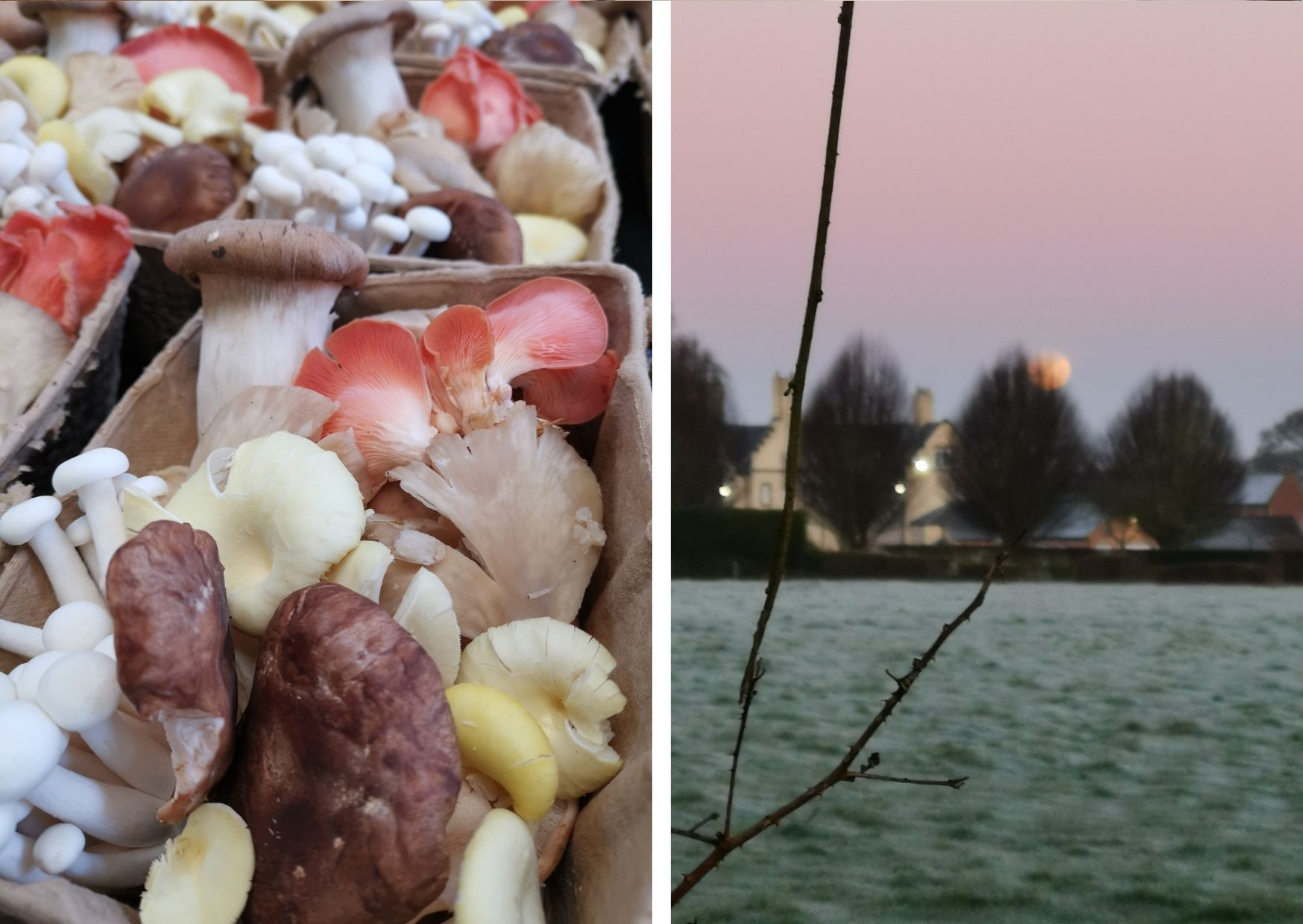

It’s also interesting to look at photos in minutia. There are so many colours in a photo, why not try looking at the colours in just a small part of that photo?

Many people cited nature as one of their main inspiration sources. No wonder, look at the amazing array of colours found in one bird or a small pile of leaves!


I also love to look to architecture for colour inspiration because buildings are often made from an interesting mix of materials.


Other places for colour inspiration can be found in all sorts of places beyond looking at architecture and nature, but particularly in other crafts.
Althea McNish - I recently came across a textile artist called Althea McNish. She was one of the best textile artists in the UK during the mid-20th Century, always bringing her Trinidadian colour palette to her colour choices. Many of her fabrics are bold, bright and contrasting and have definitely made me rethink some of my future yarn choices. The V&A Museum website has some details on Althea.
Patchwork quilting - Look to crafts such as patchwork quilting to see how colours are combined. I love these ones which show fabrics used over many generations to create functional quilts that were made from scraps to cover windows, walls and floors to keep the inhabitants of Gee’s Bend warm in their cabins:
A simple web image search for “patchwork quilts” will bring thousands of colour combination ideas straight to your computer screen.
Fashion - Fashion is also a great source of colour inspiration. I recently happened upon an exhibition in Hawick, a Scottish Border town. It was called ‘Colour, Texture & Destination’ : An exhibition celebrating the creative and cultural legacy of Bernat Klein. Whilst Klein was a true innovator for knitwear, it was actually the colour palettes that the Fashion Communication and Design for Textiles students had pulled together based on his work that I found more interesting. I photographed most of their mood boards for future colour combination ideas.


Colour inspiration is literally everywhere! I often dip into the latest catwalk shows to see which colours are going to be popular in the coming years. I am far from being a follower of fashion, but as a designer, it’s interesting to see which colours are going to be popular and to see how colours are being used in textiles.
Hashtags - Another rabbit hole you can fall down is to follow colour specific hashtags on Instagram. I cannot be held responsible for the amount of time you spend looking that these hashtags
#coloursofnature #colorsofnature #coloursofindia #colorsofindia #coloursoftherainbow #colorsoftherainbow #coloursofautumn #colorsofautumn #coloursoflife #colorsoflife #coloursofdecay #colorsofdecay #coloursofthesky #colorsofthesky #coloursoftheworld #colorsoftheworld #coloursofspring #colorsofspring #coloursofbritain
Pattern checks - If you are making a pattern that has been made before, check the hashtags to look at the colour combinations others have used. People are generally quite good at giving details of the yarn they have used, so it can be easy to replicate their yarn choice, or take to the web to find a yarn alternative in similar colours.
TOP TIPS
1 - The proportion of colours you add to a yarn project will directly impact on your finished object and how dominant a colour appears. Think about whether you want the colour that uses the most yarn to be your dominant colour of if you want it to pop out because it is less apparent.
2 - It is also worth thinking about how the finished item will be worn. If it is a shawl, you may want the dominant colour where the shawl sits across your chest, rather than what seems dominant when the shawl is lying flat.
3 - If you are buying yarns to get a very specific colour combination, going to a yarn shop or yarn show will always be your best option for colour accuracy but that isn’t possible for everyone. Chances are that your most up to date screen is your phone or tablet and will therefore have the best colour accuracy. Computer screen colours often don’t match the yarn in reality, so use your newest screen tech for making colour choices (make sure you read the ‘tools section’ and the link on checking your computer monitor for accuracy).
4 - Another option is to see whether you can buy shade cards so that you always have a colour reference to refer back to for a specific yarn brand. It’s also useful to keep little nuggets of yarn back to build up your own shade cards as a reference.
5 - Always assess your colour choices in natural light. This is a great tip for yarns shops and yarn shows too. Ask to take the yarn to a natural light source before you purchase it. Strip lights are particularly awful for viewing colour under.
6 - If you are buying yarn in a skein online, look closely at the photos that have the skein opened up. This will give you a better idea of all the colours in that skein. When yarn is twisted into skeins it could be hiding your least favourite colour. If you are looking to buy a skein at a show, ask the dyer whether you can open it out to check it. They should be happy for you to do so, but don’t be offended if they then take it back to re-skein it, because dyers are very specific about the number of twists they put in their skeins.
7 - If you are making an item for someone else, pay attention to what colours they already wear or have in their home. If they don’t live nearby, take a look at their social media accounts to see what colours they are wearing in photos. I know that making something for my best friend in bright pink or teal blue is a safe bet. I also know that there is no way she would wear my favoured sludgy colours.
8 - Look at your stash - what can you use from there as a starting point? That could make it easier to then buy other complementary yarns for.
9 - Don’t be afraid to frog it back to change colour. It’s better to frog than make something that won’t be worn. The beauty of crochet is it’s so much easier to frog than knitting!
10 - Look up resources on wearing the suitable colours and remember that this changes with age. There are too many resources out there for me to choose from, but I did discover that teal and aubergine work for every skin tone.
12 - Wind off a little piece of each yarn colour and wrap them around a peg. This allows you to quickly rearrange colours into a combination you love. Once you have your colour combination, use them in a swatch to double check how they look in the stitch pattern.
13 - Lovecrafts have a colour comparison option on their website. You can create 'collections' of colours by pressing the ribbon-shaped ‘save’ button on a specific yarn type and colour. You can have different collections and pull together different colour options. There is no reason why you couldn’t pull together a colour collection for each pattern you are looking to buy yarn for. This does also mean that you are limited to checking the yarns available from Lovecrafts, but as I type this, they have 1195 to choose from.
14 - Use Pinterest to get inspiration and save colour combinations ideas. You can do the same on Instagram by clicking the ribbon-shaped ‘save’ button on a photo you like. If you are really unsure about a dyers colours, contact them to ask questions. I personally only think you should ask them about combinations of their own yarns.
RESOURCES
My Color Space is an amazing website. You can choose what your main/ dominant colour is likely to be and the website gives you a number of colour combinations that you can use. You can either choose the colour on screen, or enter a hex code for that colour. The website then shows you 25 different colour combinations with 3-5 different colours. If you want to get really specific, there is a phone app called Color Grab that you can point at your yarn and it will tell you what the hex code is, you can then feed that into the My Color Space website!
I found this colour wheel online. I love that it has shades, tints and tones as well as colours on it. I think this is much more helpful for crocheters and knitters, especially if you are drawn to a specific band of colours. I love shades and tones in particular.
Here are some free downloadable colour wheels that you can also work from.
This is a quick and easy way of visually checking whether you computer monitor is accurate or needs to be adjusted in settings. If you buy a lot of yarn online and need better colour accuracy, this is a good quick way of increasing your odds of getting the right colour of yarn.
This is Tien Chiu’s website and she has lots of great tips on choosing colour for weaving that are just as applicable for crochet and knitwear.
COLOUR CONFIDENCE
I really hope that the information in this blog post helps to build you colour confidence.
You may also find these posts helpful:
How to 'Read' a Skein of Variegated Yarn for Crochet
How to Hold Multiple Strands to Make Heavier Weight Yarns
It would be great to hear from you on social media. Show me your colours combos!
LET'S KEEP IN TOUCH
It would be lovely to hear from you on Instagram or Pinterest. I also have a monthly newsletter which you can sign up for below.
About Fay Dashper-Hughes

My name is Fay and I design crochet and knitwear patterns. I love proper woolly wool and showing crochet off for the beautiful, versatile craft that it actually is. Inspired by nature, architecture, Scottish landscapes and British wool.
Generally found in my happy place, my craft studio, affectionately known as The Hive.
